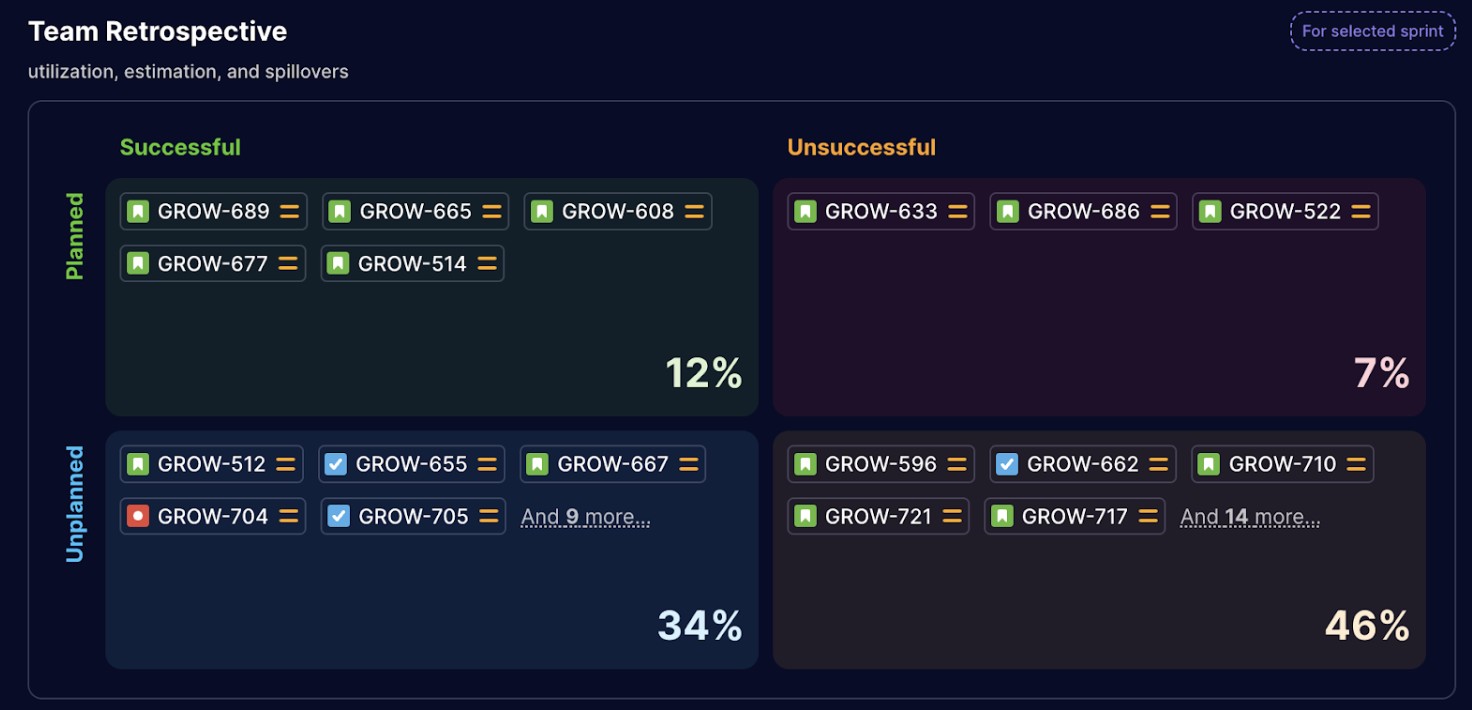Team Retrospective
The Team Retrospective metric in the Sprint Reports for Jira app provides valuable insights into team performance by analyzing the completion rate of planned and unplanned work within a specific timeframe, typically a sprint. This metric is often visualized as a matrix to effectively compare success rates across different categories.

Understanding the Matrix
- The matrix has two rows and two columns:
- Rows: Represent planned and unplanned work.
- Columns: Represent successfully completed and unsuccessfully completed work.
- Each cell of the matrix displays the number and percentage of tickets that fall into the corresponding category.
Interpreting the Data
- Planned/Successful: This cell represents the ideal scenario where planned work was successfully completed. A high percentage in this cell indicates efficient planning and execution.
- Planned/Unsuccessful: This cell captures planned work that was not completed. A high percentage here suggests potential issues with planning accuracy, resource allocation, or unforeseen challenges.
- Unplanned/Successful: This cell shows unplanned work that was successfully completed. While unplanned work can disrupt workflow, successfully completing it can demonstrate the team's adaptability and problem-solving skills. However, a consistently high percentage in this cell might indicate a need to improve upfront planning and requirements gathering.
- Unplanned/Unsuccessful: This cell represents unplanned work that was not completed. This category is generally undesirable as it reflects additional effort invested without achieving the desired outcome.
Additional Considerations
- Analyze the matrix in conjunction with other reports and metrics like sprint project flows or velocity reports to gain a more comprehensive understanding of the team's performance.
- Consider external factors that might have impacted completion rates, such as unforeseen dependencies, resource availability, or changes in priorities.
- Use the insights from this metric to facilitate team retrospectives and discussions to identify areas for improvement, refine planning processes, and enhance overall team effectiveness.
Effective Utilization
By effectively utilizing the Team Retrospective metric and the insights it provides, teams can:
- Evaluate their planning accuracy and identify areas for improvement.
- Assess their ability to handle unplanned work and adapt to changing circumstances.
- Identify opportunities to improve communication, collaboration, and problem-solving within the team.
- Make data-driven decisions to optimize their workflow and enhance their overall project delivery performance.